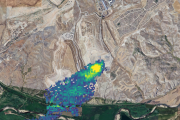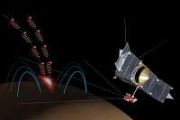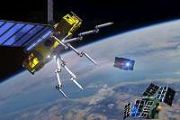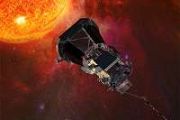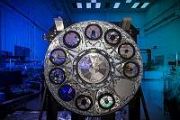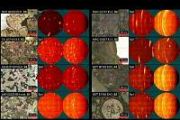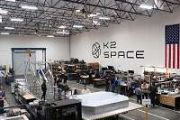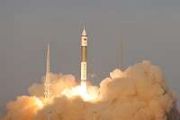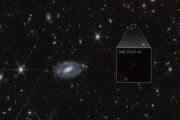
Copernical Team
Enhancing connectivity and readiness at Space Systems Command
 At a well-attended event on April 18, 2024, at Los Angeles Air Force Base, Lt. Gen. Philip Garrant emphasized the unity and purpose binding the personnel of Space Systems Command (SSC). He addressed the crowd, highlighting the crucial role of the command's blend of military, civilian, and contractor staff in achieving mission objectives.
"One of our four 'Guardian Ideals' is connection - c
At a well-attended event on April 18, 2024, at Los Angeles Air Force Base, Lt. Gen. Philip Garrant emphasized the unity and purpose binding the personnel of Space Systems Command (SSC). He addressed the crowd, highlighting the crucial role of the command's blend of military, civilian, and contractor staff in achieving mission objectives.
"One of our four 'Guardian Ideals' is connection - c Finnair suspends flights to Estonian city over Russian GPS interference
 Finnair said Monday it was suspending flights to the Estonian city of Tartu for one month due to GPS interference that the Estonian foreign minister labelled a Russian "hybrid attack".
All flights to Tartu were suspended between April 29 and May 31 while "an alternative approach solution that doesn't require a GPS signal can be put in place at Tartu Airport," the Finnish carrier said in a s
Finnair said Monday it was suspending flights to the Estonian city of Tartu for one month due to GPS interference that the Estonian foreign minister labelled a Russian "hybrid attack".
All flights to Tartu were suspended between April 29 and May 31 while "an alternative approach solution that doesn't require a GPS signal can be put in place at Tartu Airport," the Finnish carrier said in a s Major advancements in US space domain awareness through Space Systems Command
 Space Systems Command (SSC) has made significant strides in space domain awareness (SDA) with its Tools Applications and Processing (TAP) Lab, recently achieving mission success in collaboration with both commercial and academic partners for the Apollo Accelerator Cohort 2 on March 4, 2024.
The SDA TAP Lab orchestrates structured programs like the Apollo Accelerator, which foster collabora
Space Systems Command (SSC) has made significant strides in space domain awareness (SDA) with its Tools Applications and Processing (TAP) Lab, recently achieving mission success in collaboration with both commercial and academic partners for the Apollo Accelerator Cohort 2 on March 4, 2024.
The SDA TAP Lab orchestrates structured programs like the Apollo Accelerator, which foster collabora Intelsat and CNH to enhance Brazilian agriculture with satellite connectivity
 Intelsat, a major provider in integrated satellite and terrestrial networks, alongside CNH (NYSE: CNHI), known for brands like Case IH, New Holland, and Steyr, have committed to implementing advanced satellite terminals on CNH farm equipment across Brazil's remote farmlands using Intelsat's extensive global network.
"As the first satellite communications company to provide multi-orbit connectiv
Intelsat, a major provider in integrated satellite and terrestrial networks, alongside CNH (NYSE: CNHI), known for brands like Case IH, New Holland, and Steyr, have committed to implementing advanced satellite terminals on CNH farm equipment across Brazil's remote farmlands using Intelsat's extensive global network.
"As the first satellite communications company to provide multi-orbit connectiv NASA study reveals comprehensive global river water accounting
 NASA has spearheaded a significant study that recalibrates our understanding of global river water volumes, offering new estimates on river flow and storage vital for managing the Earth's freshwater resources. The research, detailed in Nature Geoscience, employs an innovative methodology merging traditional stream-gauge readings with advanced computer simulations across approximately 3 million r
NASA has spearheaded a significant study that recalibrates our understanding of global river water volumes, offering new estimates on river flow and storage vital for managing the Earth's freshwater resources. The research, detailed in Nature Geoscience, employs an innovative methodology merging traditional stream-gauge readings with advanced computer simulations across approximately 3 million r Spire Global to supply AI-Enhanced Weather Predictions to Financial Sector
 Spire Global has finalized a significant agreement with a financial firm to deliver advanced weather forecasting solutions. The deal involves supplying a high-resolution weather forecast model with a six-day outlook, enhanced by unique data sourced from space, and the development of an AI-driven model for extended-range forecasts.
The collaboration will extend Spire's recent partnership wi
Spire Global has finalized a significant agreement with a financial firm to deliver advanced weather forecasting solutions. The deal involves supplying a high-resolution weather forecast model with a six-day outlook, enhanced by unique data sourced from space, and the development of an AI-driven model for extended-range forecasts.
The collaboration will extend Spire's recent partnership wi NASA's ORCA, AirHARP Projects Paved Way for PACE to Reach Space
 It took the Plankton, Aerosol, Cloud, ocean Ecosystem (PACE) mission just 13 minutes to reach low-Earth orbit from Cape Canaveral Space Force Station in February 2024. It took a network of scientists at NASA and research institutions around the world more than 20 years to carefully craft and test the novel instruments that allow PACE to study the ocean and atmosphere with unprecedented clarity.
It took the Plankton, Aerosol, Cloud, ocean Ecosystem (PACE) mission just 13 minutes to reach low-Earth orbit from Cape Canaveral Space Force Station in February 2024. It took a network of scientists at NASA and research institutions around the world more than 20 years to carefully craft and test the novel instruments that allow PACE to study the ocean and atmosphere with unprecedented clarity. NASA uses small engine to enhance sustainable jet research
 Located inside a high-tech NASA laboratory in Cleveland is something you could almost miss at first glance: a small-scale, fully operational jet engine to test new technology that could make aviation more sustainable.
The engine's smaller size and modestly equipped test stand means researchers and engineers can try out newly designed engine components less expensively compared to using a m
Located inside a high-tech NASA laboratory in Cleveland is something you could almost miss at first glance: a small-scale, fully operational jet engine to test new technology that could make aviation more sustainable.
The engine's smaller size and modestly equipped test stand means researchers and engineers can try out newly designed engine components less expensively compared to using a m Shenzhou XVII astronauts safely back from Tiangong space station
 The crew of Shenzhou XVII has successfully returned to Earth after a six-month tenure aboard the Tiangong space station, marking the conclusion of their extensive orbital mission.
The crew's spacecraft, Shenzhou XVII, landed its reentry capsule in the Gobi Desert at the Dongfeng Landing Site in Inner Mongolia at precisely 5:46 pm following a nine-hour return journey.
Upon landing, th
The crew of Shenzhou XVII has successfully returned to Earth after a six-month tenure aboard the Tiangong space station, marking the conclusion of their extensive orbital mission.
The crew's spacecraft, Shenzhou XVII, landed its reentry capsule in the Gobi Desert at the Dongfeng Landing Site in Inner Mongolia at precisely 5:46 pm following a nine-hour return journey.
Upon landing, th Satellite Deployment and Orbital Risks Increase Amid Growing Space Congestion
 Slingshot Aerospace, Inc., a leader in AI-powered solutions for satellite tracking, space traffic coordination, and space modeling and simulation, has released its first State of Satellite Deployments and Orbital Operations report. The report draws on data from the Slingshot Seradata satellite and launch database and is the result of analyses by Slingshot Seradata analysts and the Slingshot Aero
Slingshot Aerospace, Inc., a leader in AI-powered solutions for satellite tracking, space traffic coordination, and space modeling and simulation, has released its first State of Satellite Deployments and Orbital Operations report. The report draws on data from the Slingshot Seradata satellite and launch database and is the result of analyses by Slingshot Seradata analysts and the Slingshot Aero 









